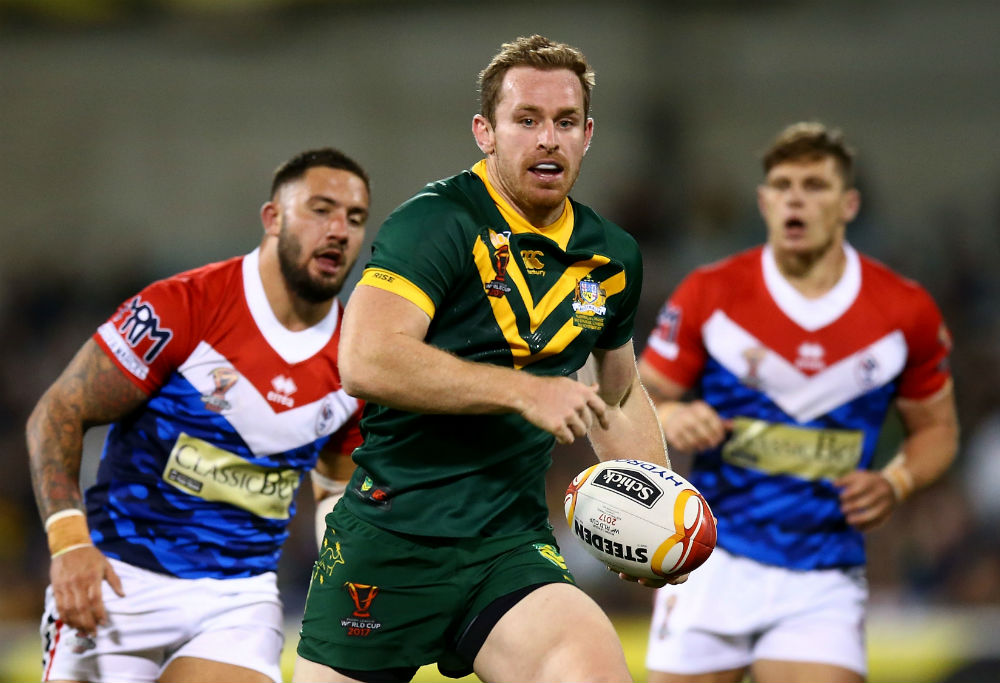In the week of the Rugby League World Cup final, a friend pointed me in the direction of an interesting document.
It was the strategic plan of the Rugby League International Federation, compiled in 2015, but designed for implementation in the years 2018-2025.
I’ll resist the temptation to come off half-smart by trying to poke holes in what is essentially a well-meaning strategy.
These kinds of plans are always hard to orchestrate. Authors are encouraged to shoot for the stars when putting pen to paper, but best-case scenarios happen so rarely in real life.
Certainly, there’s a lot to get excited by – talk of eight-year representative calendars mapped in advance, the sport being played in more than 70 countries, development officers in every continent, and a global nines program that increasingly looks like coming to fruition.
Sure, I believe the strategy contains some oversights and areas where there has been little progress to date, but there was one section that really struck me as intriguing and worthy of public discussion.
On page 14, under the heading ‘The ten key initiatives for the RLIF through 2025′ there is clear and ambitious target set.
It says: “Target two additional G20 nations for development”.
Within that section the strategy suggests targeting nations with a good fit for rugby league, creating spectator and media interest, being proactive with development, and using special events to encourage expansion.
Where this gets interesting is in interpreting what it means by ‘two additional G20 nations’.
Only five G20 nations – Australia, the United Kingdom, the USA, Italy and France – took part in the current World Cup.

(Photo by Mark Nolan/Getty Images)
So let’s firmly draw a line through them and say they’ve already made the grade (although, gee France and the USA are a worry).
Of the other G20 nations there are several who took part in the 2017 qualification process but were unsuccessful – Canada, Germany, Russia and South Africa.
Of those remaining, we know Argentina, Brazil, Japan, Mexico and Turkey are already playing the sport and will be stronger in the future.
We also know there are players from China, Indonesia and India who play the game, but attempts to form lasting federations in those countries have been in vain.
That leaves Saudi Arabia and South Korea as the leftovers from the G20 group, with the inclusion of the European Union only adding further ambiguity to the statement.
Within the European Union are multiple countries where league is already present, but would no doubt welcome being given ‘special project’ status by the RLIF – countries like Ireland, Spain, the Netherlands, Sweden, the Czech Republic etc.
So where should the RLIF be aiming its crosshairs?
Should they be focusing on G20 countries which just missed out on the World Cup? Should they be aiming at the next level down where a guiding hand is even more needed?
Or should they be targeting nations which are essentially virgin territory?
If I put personal biases to one side and exclude the Latin American nations where I already see great potential, then I say India has to be one of these countries.
From being around emerging nations, I see a sleeping giant waiting to be awoken.
India already has some gifted players in social competitions around Australia and New Zealand, obviously has a huge population at 1.2 billion people, and has open trade and cultural ties to the UK and South Pacific to help it catch on.
What they’ve really lacked is those one or two administrators with the strength, passion and vision to direct the ship.
You’re possibly doubting Indians are physically up to the challenge, but trust me there are guys out there who are over six feet, close to 110kg and run like the wind.
Anybody who has watched the sport of kabaddi, which is hugely popular in India and has its own national league and TV deal, can see skills and physiques which could transfer.
“Like red rover played by overzealous wrestlers” is how one online article described it. Sound familiar?
So yep, I’m putting in one vote for India.
Selecting another G20 focal point worthy of the RLIF’s attention is more open to debate in my eyes, again excluding the Latin American countries I’m involved with.

(Photo by Matthew Lewis/Getty Images)
I’m tending towards South Africa, even though they were only a few steps away from 2017 World Cup qualification.
While Lebanon deserves all praises in its performances at the World Cup and undoubtedly deserved its place among the elite, their wins over South Africa in qualifying raise the eyebrows.
How does a country of six million beat a country of almost 60 million, while still not playing their best players – and do so to the tune of 40-12 and 50-16 when both games were held in South Africa?
As much as those statistics tell the gallant story of an emerging nation, they also tell the story of a dysfunctional behemoth that is performing well below its potential.
Of course the answer lies somewhere in the rift with rugby union, and the degree of opposition thrown in the faces of local pioneers.
Nobody does anything easily in South Africa and they are pushing the proverbial uphill, but you’d have to tend to think there is significant ground to be made with a concerted, funded approach.
Of the other nations in the G20, I see plenty who will still face challenges and need assistance, but where a dedicated RLIF project may not reap the same extent of rewards.
I’m interested in which countries you would nominate if the power was in your hands.































































































